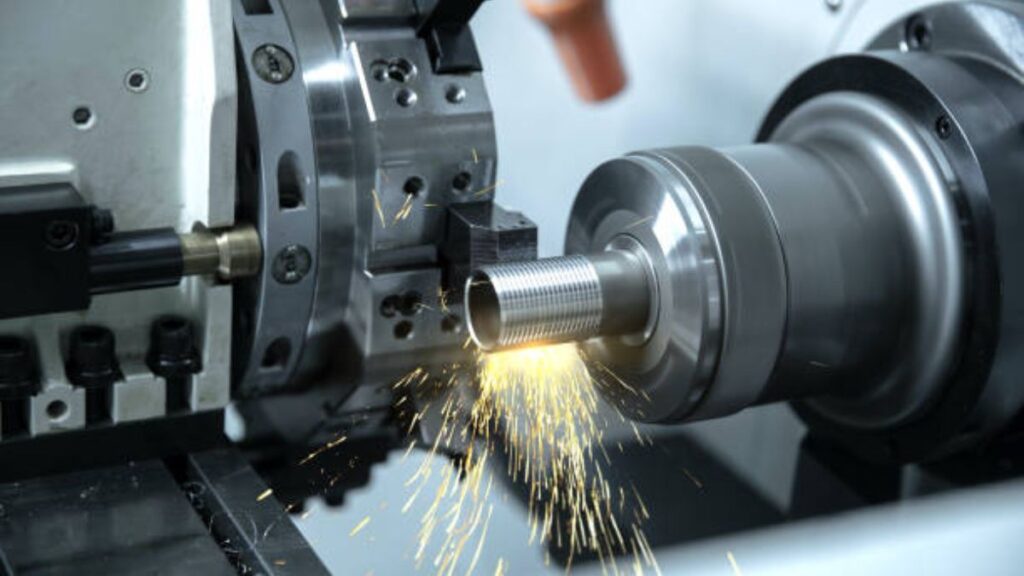Modern factories need flexibility and accuracy, not just bragging rights. Because industries such as aerospace, electronics, medical equipment, and robotics now order small runs of one-off parts, old-school mass production can barely keep up. That’s why many shops rely on CNC turning parts to handle high-mix, low-volume work without missing a beat.
In the paragraphs that follow, we’ll look at how precision machining parts made on CNC lathes let builders push parts out fast while still meeting strict size and finish specs, no matter how varied the blueprints or materials may be.
Understanding High-Mix, Low-Volume Production Today
High-mix, low-volume (HMLV) production is a manufacturing style that turns out many different parts, but only a few of each one. This setup lets builders keep designs fresh and respond quickly to what customers ask for, yet it also brings headaches:
- Frequent changeovers
- Complicated stacks of inventory and tooling
- Higher risk of size inconsistencies
- Tighter deadlines for many product lines
CNC turning parts fit these shops perfectly because the machines are easy to program, hold tight tolerances, and switch to a new design almost on-the-fly. Instead of the long manual tweaks a classic lathe needs, a CNC turning center updates digitally and runs with little hands-on work, slashing setup time and cutting error.
In a high-mix factory, every second saved adds up. Yes, accuracy is vital, but speed is the friend that keeps orders on schedule. That blend is exactly what good CNC turning and precision machining parts deliver.
Why CNC Turning Matters for Dimensional Accuracy
Dimensional accuracy sits at the core of any working mechanical part. Whether the piece is a rotor shaft, a threaded fitting, or a housing for a medical device, even a tiny measurement slip can cause failures or screw up the entire assembly.
CNC turning is a process where a computer guides a spindle that spins the workpiece against a fixed cutting tool. Because the move-ments are automated, every diameter, length, thread, groove, and sheen comes out exactly as planned. Real-time sensors and multi-axis control add even more muscle, giving CNC turning:
- Tolerances down to ±0.002mm
- Uniform finishes and concentricity
- Toolpath optimization for complex profiles
- Seamless transitions between materials or part types
These traits matter most when shops make precision machining parts for cars, airplanes, or medical gear, places where a single tick out of spec can break both function and rulebook.
Inside a single set-up, CNC turning moves from heavy rough cuts straight to mirror-smooth finish work, yet it keeps the needle on tolerances that upper-tier operations demand.
Speed Versus Precision: Finding the Sweet Spot
In HMLV (high-mix, low-volume) production, the real headache is keeping parts true while still keeping customers happy with quick turnarounds. Old-school methods usually made you pick one and lose the other. New gains in precision machining parts built, especially through smarter CNC turning, have tossed that rule out.
Manufacturers now balance both sides with tools like these:
- Automated tool changers cut the wait between batches.
- Digital twin simulations let engineers catch trouble long before any metal meets the spindle.
- Inline inspection systems watch dimensions as each part leaves the work zone.
- Modular fixtures let shops set up quickly, even when the part shape is off the shelf.
Because of these tools, modern CNC lathes can run different revisions of the same design almost straight away and still keep every measurement within spec.
Since both CNC-turned and other precision parts come from the same tightly controlled floor, a plant can ramp up or down across many SKUs and trust that every batch, big or small and no matter what material, will hit its tolerances.
Material Diversity and Machining Adaptability
High-mix work naturally brings a mix of metals and plastics. One lot could be titanium for an airplane, the next a PEEK塑料 for a medical implant, and the one after that a set of stainless-steel fittings for a fluid line. Each material reacts differently to cutting, so spindle speed, feed rate, and chip removal all have to change.
Today precision CNC lathes give shops three key features:
- Adaptive machining parameters: feeds and speeds set for the exact material at hand.
- Multi-axis support: turning and light milling done in one clamp so the part never leaves the machine.
- Coolant and lubrication control: every mist or flood timed to stop hard spots or heat bends.
On top of that, shop-floor software now carries material libraries that suggest the right insert and plan the cycle on the fly. That means crews can swap from titanium to plastic or steel and hardly lift a finger.
In business-to-business work, this flexibility lets contract manufacturers and OEM partners field more client orders, widen their service menu, and still keep production on schedule.
Quality Control and Digital Traceability
In fields such as aerospace, defense, and medical gear where high-mix, low-volume runs are the norm, staying compliant with rules and tracking each part is a must. It’s not enough to turn out an exact piece; the maker also has to prove it met every spec and can be duplicated the same way.
Today’s CNC lathes link straight to quality checks by:
- Logging each step of the run
- Taking digital reads with coordinate measuring machines (CMMs)
- Saving notes for audits and SPC (statistical process control)
- Pushing out automatic inspection reports for the buyer
These features help precision machined parts stand out in sectors that demand heavy paperwork. Because the records sit in the cloud, managers can make quick calls from anywhere and teams can work together without being in the same shop.
For CNC turning parts and other precision items, digital traceability locks in repeatability across batches-even years after the first order.
Conclusion: CNC Turning Gives B2B Shops an Edge in Mixed-Order Work
With product timelines shrinking and buyers asking for ever-more variety, B2B shops must pivot quickly and nail every detail. CNC-turning parts deliver the speed, flexibility, and tight fit that high-mix, low-volume runs demand.
When firms tap into these strengths through precision-machined parts, they can:
- Slash changeover times and keep machines cutting more hours
- Hold exact tolerances across many shapes and materials
- Provide digital logs and quality checks required by regulators
- Reach more customers with custom, budget-friendly parts
In a marketplace that moves fast and expects laser-like accuracy, CNC turning has grown from a specialty skill to a must-have playbook for growth in mixed-order manufacturing.







